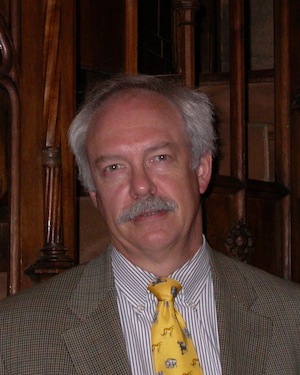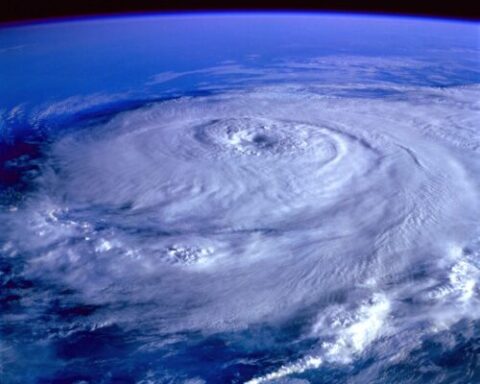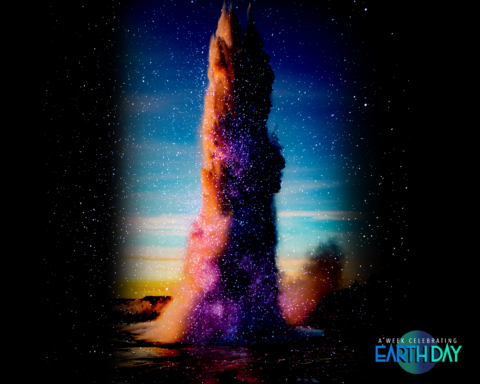Why Apocalyptic Language? When Prophetic Isn’t Enough.

In a recent article entitled “How Climate Change Will Kill Us in the Dumbest Way Possible,” Buzzfeed commentator Akira Watts argues that the collapse of our society will be fairly prosaic due to infrastructure failure. Without functioning major roads and transmission lines, things begin to back up and rot, sewage goes directly into water sources, public health is compromised, and panic and survivalism take over. He reports on a study of infrastructure vulnerabilities coordinated by a pair of scientists at Oak Ridge National Laboratory. They model the impact of severe storms or floods on independent transportation, communications, electrical power, water, and public services, including public health. In coastal areas that continue to gain in population density, there is increased risk of cascading problems. And this is a study that does not look at emergencies like the Fukushima nuclear meltdown and previous nuclear accidents, including Chernobyl. Just multiply Hurricane Sandy by one or two, and we step into this territory.
Other articles in this issue of Unbound have looked at the basic challenge of climate change and the ways societies, through their governments, are failing to meet the challenge. Many of the most powerful economic institutions, the energy corporations, have actively fought efforts to reduce carbon emissions by funding politicians and propaganda campaigns to confuse the issues. Yet even those who understand that the situation is already dire can find the urgent calls and drastic scenarios of environmental scientists and activists to be extreme and overwrought. Eric Mount’s review of an Atlantic Monthly article’s effort to find a middle path looks at how “shrill” voices of eco-advocates often prompt the reverse reaction of minimizing risks.
___________________________________________
The prophetic critique often remains too tied to the existing structures, seeking reform even while resisting. The apocalyptic generates alternatives.
___________________________________________
The word “apocalyptic,” is then often dismissed in a pejorative sense as alarmist in a way that reinforces society’s inability to mobilize its moral energies behind necessary social changes and public investments. People who talk of the collapse of eco-systems and the end of civilization are seen as crazy, even if they have very rational calculations that solar energy will not develop quickly enough to avert intensifying storms, droughts, floods, and the death of countless species. Today, in fact, accurate scientific literature is legitimately apocalyptic in the sense that the Encyclopedia Britannica defines it, for it contains “an imminent crisis, a universal judgment,” though it lacks a third component of “supernatural resolution” found in scripture and other apocalypses written in the 200 B.C.E. to 200 C.E. period.
 If the church is to be “the salt and light of the world,” it must contribute to mobilizing moral energy in a constructive way. Two strengths of the church seem particularly needed: its spiritual range and its understanding of God’s purposes in history. In times of catastrophic danger, for example, “Keep calm and carry on” is NOT the Gospel, while opposing the right “principalities and powers” is. But what does it mean to keep the “apocalyptic” setting on the dial? And how do we reclaim the “supernatural resolution” once clothed in the magnificent and terrifying language of the books of Revelation, Daniel, and others in that genre of apocalyptic literature?
If the church is to be “the salt and light of the world,” it must contribute to mobilizing moral energy in a constructive way. Two strengths of the church seem particularly needed: its spiritual range and its understanding of God’s purposes in history. In times of catastrophic danger, for example, “Keep calm and carry on” is NOT the Gospel, while opposing the right “principalities and powers” is. But what does it mean to keep the “apocalyptic” setting on the dial? And how do we reclaim the “supernatural resolution” once clothed in the magnificent and terrifying language of the books of Revelation, Daniel, and others in that genre of apocalyptic literature?
In her opening editorial, Managing Editor Ginna Bairby claims a basic orientation of hope for the Christian worldview. Contributor Abby Mohaupt proposes what we might call the practice of carbon “fasting;” other authors advocate passionately in favor of the campaign to divest of securities in companies bringing more fossil fuels out of the earth. But given the inertia of governments and the power of our still important traditional energy industries, can an apocalyptic understanding accelerate the powers of change?
___________________________________________
In the large spiritual frame, the apocalyptic is not a foreign category but one that has always related to the limits of human capacity and the nature of unintended consequences.
___________________________________________
The short answer here, I would argue, is YES. “Apocalyptic” can mean both systemic and holistic, including the spirituality of consumerism, for example, among the “principalities and powers” – a phrase used for cosmic forces that the late Walter Wink has so well illuminated. [1] An apocalyptic approach to environmental catastrophe also looks to the destructiveness of domination mentalities and ideologies which hold hostage vast parts of cultures and economies. When Wendell Berry speaks of a Great Economy to which all transactions must ideally or ultimately serve, you see an apocalyptic concept that opens a new horizon.

In the large spiritual frame, the apocalyptic is not a foreign category but one that has always related to the limits of human capacity and the nature of unintended consequences. Where prophets have always been commissioned to call powerful leaders and whole cultures back from various abysses, appealing to existing capacities to repent and take responsibility, there has always also been a sense of demonic potentials beyond politics, when periods and places may be “given over” to inexorable tragedy. One of the leading scholars of the apocalyptic, Paul Hanson, emphasizes that the difference between the prophetic speaker for God and the apocalyptic visionary is often their degree of alienation and powerlessness. Examining the roots of apocalypticism in Jewish thought, he points to the way that ancient Jewish thinkers became more “apocalyptic” and otherworldly upon Israel’s loss of Temple, land, and royal house. [2]
In the Christian canon of Biblical books, the seer “John” of the book of Revelation is often seen as an example of someone exiled to a place of powerlessness, unable to affect events, yet witnessing unavoidable disasters from afar. After enormous, fated cataclysms, of course, Revelation depicts an ultimate restoration by divine power, harmonizing nature and urban creativity in a heavenly city of beauty and peace.
___________________________________________
The problem is that while an expectation of the “end times” may mobilize energy, it is often not energy directed at necessary social or political change, but at one’s own personal or family survival or deliverance. This is escapism rather than hope.
___________________________________________

Since Augustine, many Christians have seen God’s purposes in history have been served through the rise and fall of empires, starting perhaps even with the tower of Babel story. Sin is part of the story—the inflation of human capacities, and in Facing the Dragon, Robert Moore, the Jungian theologian, speaks of the ways empires grow and distort capacities, causing large-scale oppression and episodic violence. Any period of oppression probably should prompt a longing for a savior or messianic leader to deliver the people and re-establish order. The Gospels provide extensive guidance on how to distinguish true and false messiahs, based on the example of Jesus. Some of our sacred texts highlight elements such as the final judgment or the emergence of “anti-Christs” (cf. the First Letter of John, a short New Testament book by a different “John” than the seer in Revelation).
History is also marked by periods of religious mania, when a general sense of judgment (perhaps a time of plague) or a charismatic leader’s interpretation of scripture may lead large numbers to prepare for the end of the world. Several examples:
- Millenarian movements around the year 1000 saw disasters coming as precursors of the reign of Christ;
- In the Jewish communities of the 1200’s, many believed that a rabbi named Sabbatai Sevi was the messiah and sold property to go to Jerusalem. (The then-dominant Turkish authorities arrested Sevi, and he is said to have converted to Islam in prison).
- At the time of the Reformation in Germany, Thomas Muntzer’s peasant army was seen as a judging, messianic movement, if not exactly an “end times” phenomenon, sharing the wealth of conquered castles and capturing towns.
- Groups like the Jehovah’s Witnesses and their precursors (like the Millerites) announced day-specific predictions of the end, and followers sold homes and goods to gather for the rapture. Rather than dying out when such events do not happen, these groups may re-calculate the dates (See When Prophecy Fails [3]) or rephrase them in ways less subject to dis-confirmation.
 The problem in such cases is that while an expectation of the “end times” may mobilize energy, it is often not energy directed at necessary social or political change, but at one’s own personal or family survival or deliverance. “Flee the wrath to come” can lead people into isolated compounds and other forms of withdrawal. Or, even among those who believe “the late, great planet earth” (to use Hal Lindsey’s book title) will soon end, they themselves will be “raptured out,” and thus saved from the ghastly tribulations that will befall the legions of sinners “left behind.” In this triumphantly dualistic scenario, where demonic and evil forces (originally mythicized images of Babylon and Rome) are vanquished, and the ‘saved’ number of 144,000 people (originally intended to show the equal inclusion of everyone from all 12 ancient tribes of Israel) is reduced to a hyper-elect remnant. As many commentators on the book of Revelation note, this is escapism rather than hope.
The problem in such cases is that while an expectation of the “end times” may mobilize energy, it is often not energy directed at necessary social or political change, but at one’s own personal or family survival or deliverance. “Flee the wrath to come” can lead people into isolated compounds and other forms of withdrawal. Or, even among those who believe “the late, great planet earth” (to use Hal Lindsey’s book title) will soon end, they themselves will be “raptured out,” and thus saved from the ghastly tribulations that will befall the legions of sinners “left behind.” In this triumphantly dualistic scenario, where demonic and evil forces (originally mythicized images of Babylon and Rome) are vanquished, and the ‘saved’ number of 144,000 people (originally intended to show the equal inclusion of everyone from all 12 ancient tribes of Israel) is reduced to a hyper-elect remnant. As many commentators on the book of Revelation note, this is escapism rather than hope.
___________________________________________
The incarnational idea that God has intrinsic continuing relations with the world puts the sense of cosmic struggle into every place where weather is changing and species struggle to survive.
___________________________________________
One can argue here that the revelation of a broad “apocalyptic” picture of cosmic forces bringing an end to a historical order – or even the world itself – can prompt people to focus more individualistically on their smaller scale “eschatologies,” or ends of life (Wendell Berry notes many definitions of eschatology, from personal death to a larger eschaton or end point). However, “apocalyptic” as I would reclaim it focuses on the meaningful purposes of the whole world seen as God’s creation.The Jungian analyst, Edward F. Edinger, in Archetype of the Apocalypse, also points to the energies of separation and reunification that are joined in the struggles of good vs. evil, and the coming to consciousness of elements from “the collective unconscious” that almost always take mythical form. [4] This is another way of connecting the individual to the whole and recognizing the significant amount of conflict that will occur. In answer to Ginna Bairby’s initial question of “bang or whimper,” I follow ethicist Ed Long in finding a “bang” more appropriate to the cosmic drama involved. [5]
 A properly faithful response to environmental warnings is concerned not simply with saving one’s own “skin,” so to speak, but with creation regaining a moral and meaningful plotline. Thomas Berry, in The Dream of the Earth, counters the “mythic commitment” to economic growth with a new cosmology of peace to avert “biocide or geocide.” [6] The incarnational idea that God has intrinsic continuing relations with the world—and even “skin” in the game—puts the sense of cosmic struggle into every place where weather is changing and species struggle to survive. Clearly human-initiated processes can now be demonic, not just in grossly wasteful wars, but also in uncontrolled consumption. And for us, the “mark of the beast” may be our media-numbed lack of empathy. Ethicist Larry Rasmussen, proposing “an asceticism that loves the earth fiercely as God’s own,” claims that “even the literature of apocalypse, perhaps the supreme example of world and earth-hating motifs, can be turned another way to serve the cause of the earth.” [7]
A properly faithful response to environmental warnings is concerned not simply with saving one’s own “skin,” so to speak, but with creation regaining a moral and meaningful plotline. Thomas Berry, in The Dream of the Earth, counters the “mythic commitment” to economic growth with a new cosmology of peace to avert “biocide or geocide.” [6] The incarnational idea that God has intrinsic continuing relations with the world—and even “skin” in the game—puts the sense of cosmic struggle into every place where weather is changing and species struggle to survive. Clearly human-initiated processes can now be demonic, not just in grossly wasteful wars, but also in uncontrolled consumption. And for us, the “mark of the beast” may be our media-numbed lack of empathy. Ethicist Larry Rasmussen, proposing “an asceticism that loves the earth fiercely as God’s own,” claims that “even the literature of apocalypse, perhaps the supreme example of world and earth-hating motifs, can be turned another way to serve the cause of the earth.” [7]
While often scary and confusing to twenty-first-century readers, traditional apocalypses were written to inspire and sustain courageous minorities in their resistance to foreign occupation or exile, and to the domination of alien worldviews. In our current time, human responsibility will be exercised best by reducing rather than increasing human power. Apocalyptic visions in environmental terms, such as those of both Thomas and Wendell Berry, of Matthew Fox, of Bill McKibben, of Amory Lovins in design, of Charlene Spretnak, and of many more Christians and other spiritual seers, assimilate the dire scientific data to alternative forms of human and natural community—new patterns of exchange and building. They call for the energy principalities to be unplugged. The prophetic critique often remains too tied to the existing structures, seeking reform even while resisting. The apocalyptic generates alternatives. May they be well grounded and cosmic at the same time, big enough to invite in a different future.
_______________________________________________________
[1] Wink, Walter. The Powers Series (Minneapolis: Fortress, 1984, 1986, 1992).
[2] Hanson, Paul. The Dawn of the Apocalyptic: The Historical and Sociological Roots of Jewish Apocalyptic Eschatology. (Phila.: Fortress Press, revised edition 1979).
[3] Festinger, Leon; Henry W. Riecken, Stanley Schachter (1956). When Prophecy Fails: A Social and Psychological Study of a Modern Group that Predicted the Destruction of the World. University of Minnesota Press. ISBN 1-59147-727-1. Reissued 2008 by Pinter & Martin with a foreword by Elliot Aronson, ISBN 978-1-905177-19-6 The key concept the authors explored was how people coped with “cognitive dissonance” when facts collided with beliefs. A similar question could be posed to those many US citizens who profess not to “believe” in climate change for partly political reasons, despite their inability to refute scientific evidence.
[4] Edinger, Edward F. Archetype of the Apocalypse: A Jungian Study of the Book of Revelation. (Chicago & La Salle: Open Court, 1999). One example of mythic imagination: at the Messianic banquet, both Leviathan and Behemoth, the monsters of sea and land, are to be served (p. 111). Who are the monsters for us to devour today?
[5] Long, Edward LeRoy, Jr. To Liberate and Redeem: Moral Reflections on the Biblical Narrative (Cleveland: Pilgrim Press, 1997) Long’s condensation of much scholarship gave me the example of how the number 144,000 was used.
[6] Berry, Thomas. The Dream of the Earth (San Francisco: Sierra Club, 1988), pp. 76-77.
[7] Rasmussen, Larry. Earth Community, Earth Ethics (Maryknoll, NY: Orbis, 1996), p. 12.
Read more articles in this series!





Unbound Social